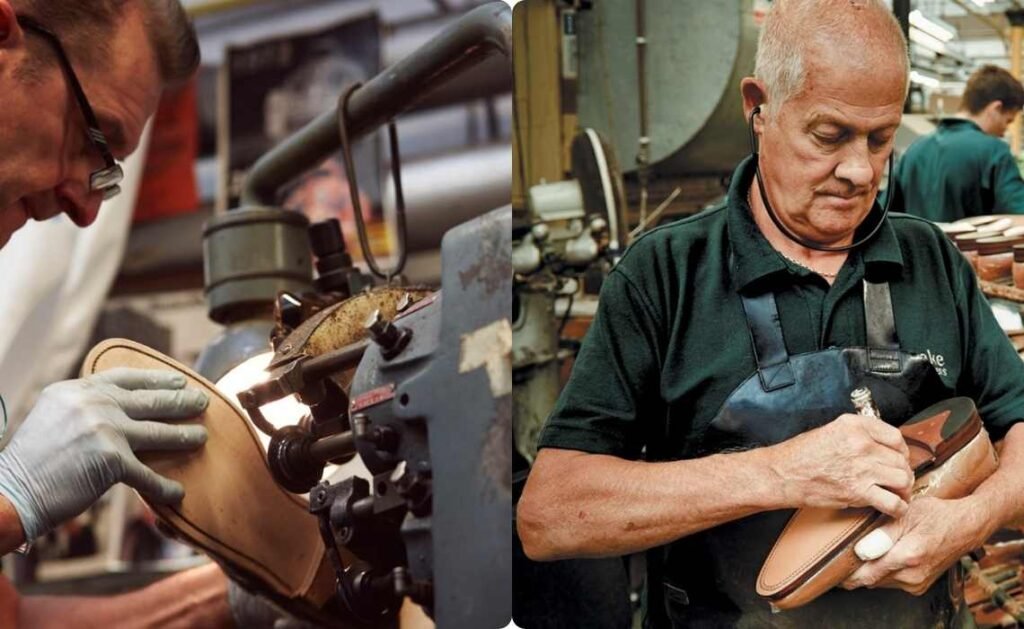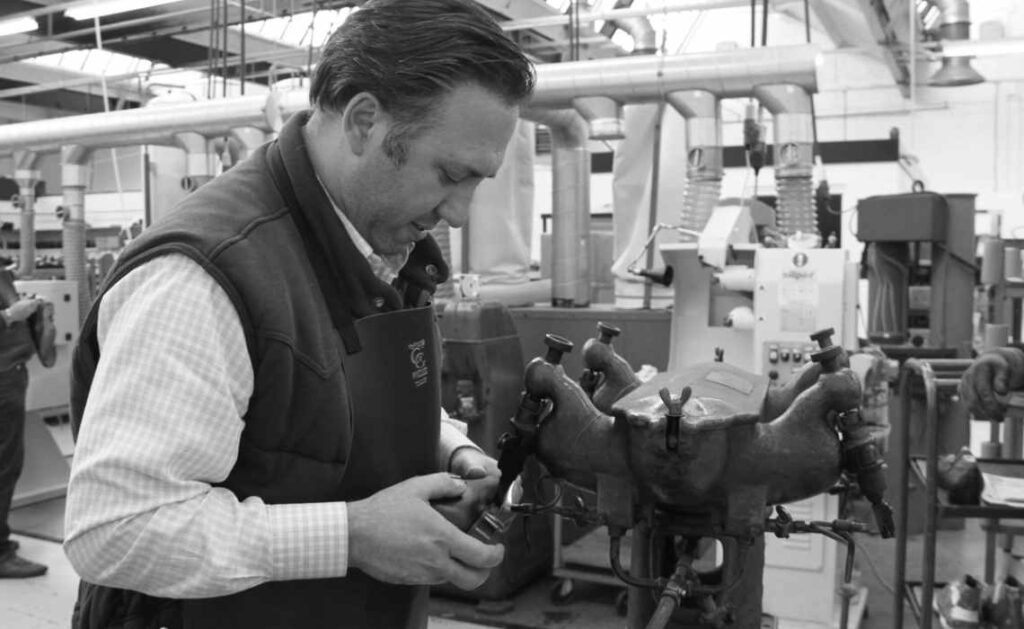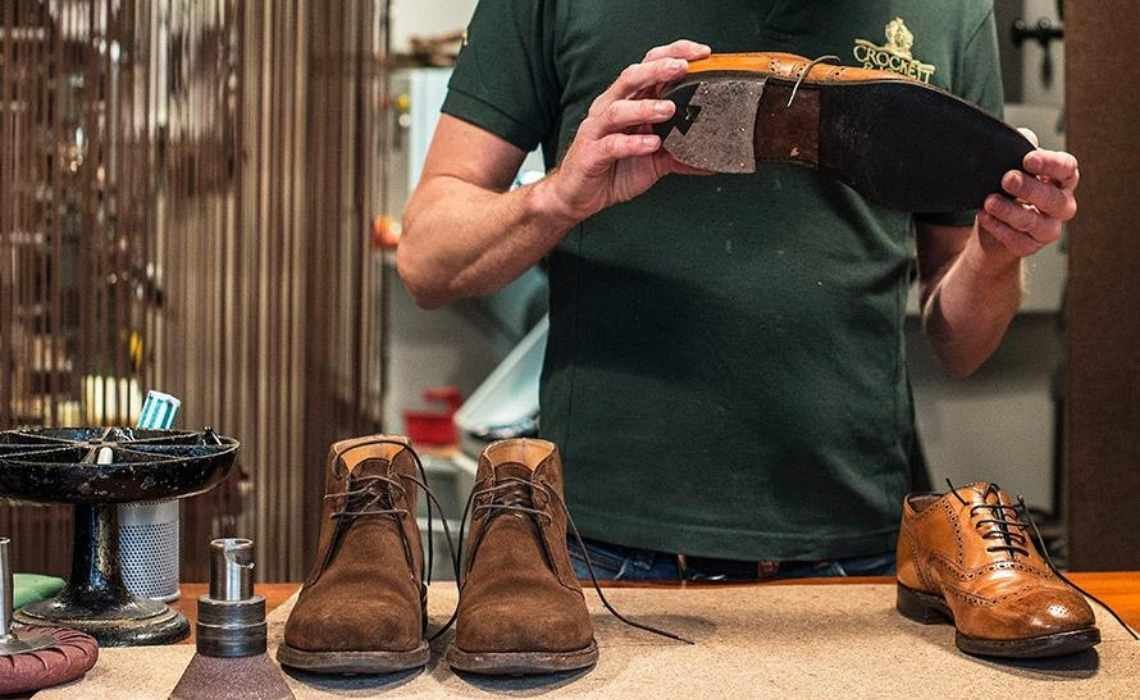Traditional stitched shoes often tout their ability to be resoled and repaired, yet the process isn’t always straightforward. Here is an outline of all possible methods of resoling and re-heeling that may apply, along with their potential restrictions and benefits based on various construction methods used for shoes.
Re-heeling
Its Re-heeling can be completed independently from sole replacement, by itself or combined with attaching a rubber topy or performing half sole replacement. Restoring heels as soon as the rubber part wears out and starts damaging heel lifts made out of simpler materials in ready-to-wear shoes is key; replacing these lifts is more complex and expensive.

When replacing heels, there are a couple of different options to consider when replacing them: factory variants featuring leather-rubber combinations or full rubber top pieces are usually more costly; while re-heeling can often be repeated. Unfortunately there is an occasional risk that brass nails corrode and damage an insole due to moisture intrusion; although rare this should still be noted as it should not go undetected.
Re-heeling typically costs around EUR20-30 in Europe; prices may differ across global regions.
Application of Rubber Topy
Attaching rubber topys to leather soles is often controversial. Some individuals add them immediately in order to protect the leather, while others seek to maintain its original feel of the shoe. In general, however, wearing the leather first before adding an outer rubber layer is advised in order to avoid grinding down new leather too quickly and unnecessarily; leather sole topy or metal toe taps may also provide added protection.
Note that adding a rubber topy won’t replace full resoling of high-quality shoes intended to last several years; replacement may still be needed for footbeds, shanks and insoles that may wear out with use. A topy costs approximately EUR20.

Resoling Blake Stitched Shoes
Contrary to popular belief, resoling Blake stitched shoes is relatively straightforward when equipped with the required McKay machine; however, each time will weaken your shoe as new stitches create holes in its upper. Resoling might only require two to five resoles in total depending on circumstances.
Blake/Rapid constructed shoes are often easier to repair, particularly if only their outsole requires replacement. A half sole replacement with reheeling for Blake stitched shoes costs approximately EUR70 while full resoling typically ranges between EUR130-150; factory resoleing services vary between EUR100-150.


Resoling Goodyear Welted Shoes
Goodyear welted shoes are well known for their easy resoling capabilities, thanks to their welted construction that allows easy outsole replacement without upsetting upper leather-insole attachment. However, canvas ribs often used in their construction may come loose or break off, complicating repairs.
Factory resoles often involve replacing the welt, which can weaken upper leather over time. Cobblers generally reuse existing holes, preserving upper integrity. Resoling limits depend on how often new holes are made in material – typically two to six times is achievable with this method of repair.
Cost estimates of replacing half soles, with or without re-heeling, range between EUR90 and EUR170 at cobblers in Western Europe; factory prices typically fall within EUR100-250 range.
Hand Welted shoes provide the greatest resoling potential, often lasting indefinitely. Their insole and holdfast are combined as one unit, adding durability. Quality insoles with stitched uppers extend this longevity even further.
Hand welted shoes can maintain the same welt throughout their lives, with the option to replace it if necessary without weakening the upper. Cobblers utilize existing holes for minimal strain on material.
Resoling costs at cobblers tend to mirror Goodyear welted shoes, with approximately 90 euros needed for half sole replacement and 170 for full resoling; manufacturer prices typically range from 150-500.
Resoling Rubber Soled Shoes
Due to their difficulty connecting old and new rubber soles, rubber-soled shoes usually undergo a full resole due to difficulty connecting old and new rubber. Pricing is similar to leather-soled shoes with full resole costs estimated between $50 to $75 compared to $65-85 when considering Goodyear welted or hand welted styles.
Overall, traditional-constructed shoes offer ample repair and resoling opportunities, although specifics depend on their construction method. Regular maintenance and timely repairs can extend their life and make quality shoes an invaluable investment.

